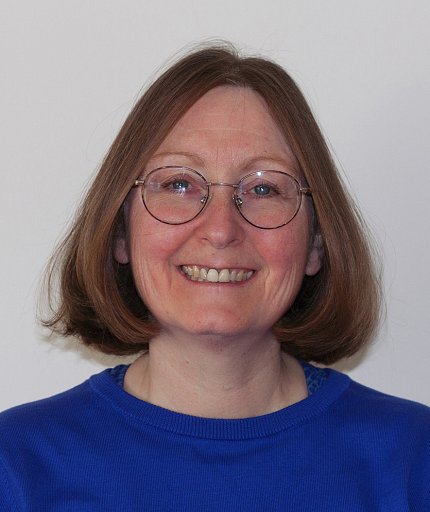NINDS’s Floeter Retires After 30 Years of Government Service

Dr. Mary Kay Floeter, a senior clinician in the motor neuron disorders unit in the Neurogenetics Branch of NINDS’s Division of Intramural Research, retired Sept. 30 after 30 years of federal service—all with NINDS.
“I will miss the people I’ve worked with for many years who have been incredibly supportive and collaborative, and the trainees whose excitement and curiosity always pushed the research further in new directions,” said Floeter. “I’m proud and humbled by their accomplishments in their post-NIH careers.”
Floeter’s research focused on motor neurons and spinal motor circuits in neurodegenerative disorders that affect the corticospinal tract. She earned her M.D. and Ph.D. from Washington University in St. Louis and completed a residency in neurology at the University of California, San Francisco. After postdoctoral work at UCSF, she came to NIH as a senior staff fellow in the Laboratory of Neural Control (LNC) to study movement control in mammalian spinal cord circuits.
“During my residency I observed a number of patients with movement disorders whose involuntary movements resembled fragments of coordinated voluntary movements,” she said. “I became interested in finding ways to use circuits that produce fragments of coordinated movement to help return movement to patients who had become paralyzed from a neurological injury.”
In 1993, as LNC relocated from Bldg. 36 to the then-new Bldg. 49, Floeter moved from NINDS’s basic research program to its clinical research program in Bldg. 10 to train in clinical neurophysiology and conduct research with Dr. Mark Hallett who was serving as NINDS clinical director at the time.
“The first patients we studied had hereditary hyperekplexia, also called hereditary startle disease, which had only recently been found to be caused by a mutation in one of the subunits of the glycine receptor,” recalled Floeter. “Glycine is the inhibitory transmitter used by certain interneurons of the spinal cord. When repeatedly exposed to a loud sound, such as a handclap, the startle response fails to habituate in patients with hereditary hyperekplexia, and muscle activation spreads to their limbs—well beyond the eyeblink that normally occurs. In these patients, we found that certain reflexes mediated by glycinergic interneurons were reduced.”
Later she joined the electromyography (EMG) section of the Clinical Neurophysiology Branch as a clinical associate. And in 1996, she was selected to serve as section chief—overseeing the diagnostic EMG laboratory with a small budget for continuing research studies.
“Over the next decade, I trained clinical fellows in diagnostic EMG, always seeking to explain normal and abnormal findings using basic principles of physiology,” she said.
Floeter was tapped to become NINDS deputy clinical director in 2006—a position she held until 2012–serving as acting clinical director for 4 of those years. She then took a partial break from the intramural program to serve on detail to the Office of Clinical Research in the NINDS Division of Extramural Research, where she helped to develop a vision for sharing clinical data and worked on the newly formed NeuroNext effort.
In 2013, Floeter returned to the intramural side to conduct a natural history and biomarkers study of C9orf72 in people with amyotrophic lateral sclerosis (ALS) and frontotemporal dementia (FTD). The purposes of the study were to describe the natural history of disease in people who carry a repeat expansion mutation in the C9orf72 gene and to find biomarkers that relate to how the disease progresses.
“I teamed up with NIA’s Dr. Bryan Traynor to carry out this study of persons carrying a hexanucleotide repeat mutation in the gene C9orf72—a mutation that Bryan and his colleagues had recently discovered as the most frequent familial cause of ALS and FTD in the U.S. and northern Europe,” Floeter explained. The study, which is still active, has completed recruitment.
Throughout her career, Floeter has authored numerous scientific articles. She is a fellow of the American Association of Neuromuscular and Electrodiagnostic Medicine and is a member of the American Academy of Neurology and the American Neurological Association.
“I will stay involved in clinical research to an extent, serving on certain advisory committees and as a volunteer in the NINDS EMG section,” she said. “I also plan to travel and visit distant family once the pandemic ends.”
